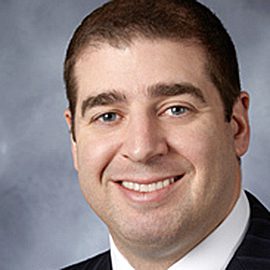

|
By Scott T. Seabolt
and Brandi F. Walkowiak
Aug. 18, 2011
On June 13, 2011, the U.S. Supreme Court reaffirmed and built on its earlier precedents prohibiting a private action for aiding and abetting liability and establishing a clear rule regarding who may be held primarily liable under Securities and Exchange Commission (SEC) Rule 10b-5. Rule 10b-5 prohibits making any untrue statement of a material fact in connection with the purchase or sale of securities. In Janus Capital Group Inc. v. First Derivative Traders, the Supreme Court held that for purposes of 10b-5 liability, the maker of a statement is the person or entity with the ultimate authority over the statement, including “the content [of the statement] and whether and how to communicate it.” At issue in Janus Capital was whether a mutual fund investment adviser could be held liable in a private action under Rule 10b-5 for false statements included in the mutual fund prospectuses of its client. Reversing the Fourth Circuit, the U.S. Supreme Court held that it could not be held so liable.
In doing so, the Supreme Court upheld its earlier precedents that Rule 10b-5’s private right of action did not include suits against aiders and abettors, Central Bank of Denver, N.A. v. First Interstate Bank of Denver, N.A., 511 U.S. 164 (1994), and barred private securities cases against third-party companies or individuals. Stoneridge Inv. Partners, LLC v. Scientific-Atlanta, Inc., 128 S. Ct. 761 (2008).
In Janus Capital, shareholders filed a putative class action against Janus Capital Group, Inc. (JCG) and its wholly-owned subsidiary Janus Capital Management LLC (JCM), alleging violations of §10(b) and §20(a) of the Securities Exchange Act of 1934. The complaint alleged that JCM, the investment adviser to the Janus mutual funds, was responsible for misleading statements, which appeared in prospectuses for a number of the Janus funds, indicating that the funds took active measures to prevent market timing of the funds. The plaintiffs claimed that the prospectuses falsely represented that the Janus funds had policies to prevent market timing, when, in fact, fund managers actually permitted significant market timing and late trading to occur. The investors claimed that these statements regarding the policy to deter market timing fraudulently induced investors to buy shares in the mutual funds. The complaint also alleged that JCM was responsible for the day-to-day management of the investment portfolio and other business affairs of the fund and that, as such, JCM ran the Janus funds.
Market timing is a trading strategy that exploits time delay in mutual funds’ daily valuation system. It refers to the practice of rapidly trading in and out of a mutual fund to take advantage of stale prices used to calculate the value of the securities held in the fund’s portfolio. The use of stale prices to calculate the net asset values makes a fund vulnerable to time zone arbitrage and other strategies.
The Fourth Circuit acknowledged that to find 10(b) liability the material misrepresentation or omission had to be made by the defendant. The complaint alleged that JCM had “helped draft the misleading prospectuses” and “caused mutual fund prospectuses to be issued for Janus mutual funds.” Thus, the Fourth Circuit concluded “by participating in the writing and dissemination of the prospectuses,” JCM had “made the misleading statements contained in the document.”
The Fourth Circuit’s decision attracted significant attention because it was viewed as a departure from the Supreme Court’s precedents and had the potential to expand 10(b) liability to myriad service providers who provide assistance to a company in preparing its prospectuses. In essence, the Fourth Circuit found that a service provider may be held primarily liable in a private securities fraud action for public misstatements through “helping” or “participating in the writing and dissemination of a prospectuses” even if the statements were not directly attributable to the service provider. This finding was at odds with sister circuits that required direct attribution for liability based on the Supreme Court’s holdings in Central Bank and Stoneridge. JCM and amici such as the U.S. Chamber of Commerce argued that the adoption of the Fourth Circuit’s substantial-participation approach would significantly expand the scope of civil liability. On June 13, the U.S. Supreme Court agreed and reversed the Fourth Circuit.
At bottom, the Supreme Court’s decision takes a plain-meaning approach to the question of who makes a statement: “One makes a statement by stating it.” The Court found that one who prepares or publishes a statement on behalf of another is not the maker of the statement and likened the case to the relationship between a speechwriter and a speaker. Only those with “ultimate authority” over the content of the statement are to be considered “makers.”
The decision was not without controversy. Justice Breyer wrote a dissent in which three other Justices joined. According to the dissent, the majority too narrowly interpreted the word “make” as used in Rule 10b-5. The dissent would have held that there are circumstances where a party can “make” a statement even if the party does not have “ultimate authority” over the statement.
Controversy aside, the majority’s narrow interpretation of the word “make” no doubt brings some relief to service providers and secondary actors such as bankers, lawyers, accountants, and investment advisers who routinely assist with the preparation of prospectuses for clients, but do not have “ultimate authority” over the statements made by their clients.
Scott T. Seabolt is a partner with Foley & Lardner LLP. He is a member of the firm’s Business Litigation & Dispute Resolution Practice, the Securities Enforcement & Litigation Practice, and the Automotive Industry Team. He also is a member of the firm’s Recruiting Committee and serves as the hiring partner for the Detroit office. Co-author Brandi F. Walkowiak, an associate with Foley & Lardner, is a member of the Business Litigation & Dispute Resolution and Government Enforcement, Compliance & White Collar-¨ Defense practices.








